SDN has moved again!
Subscribe to our RUMBLE channel
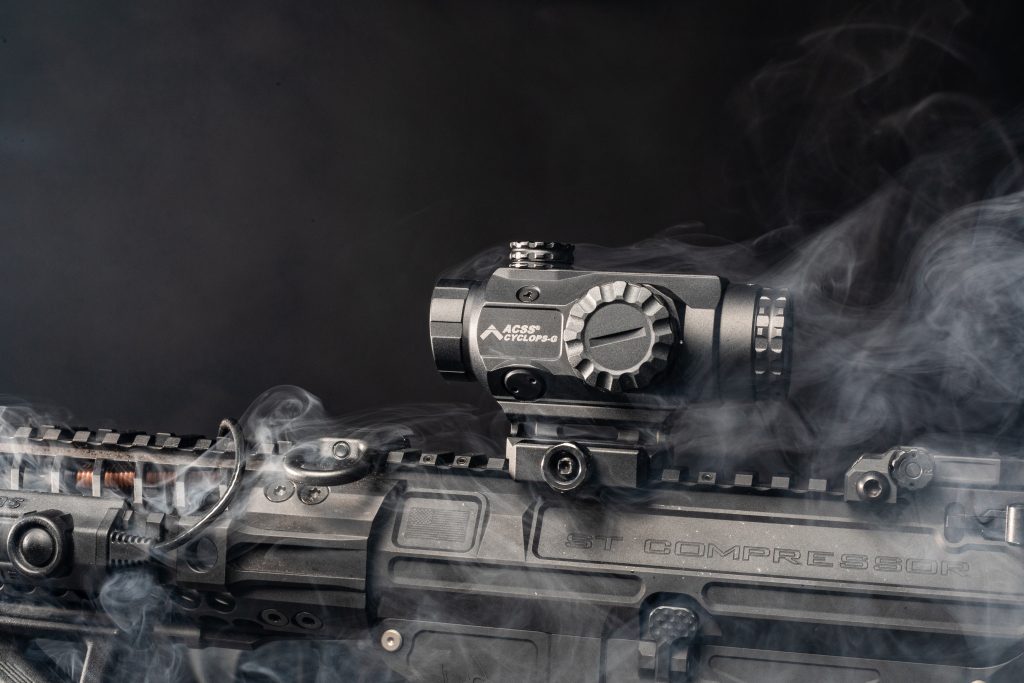
1X, Optics, PAC1X-ACSS-CYCLOPS-G, Prism Scopes, SLx
In any survival scenario, your gear’s reliability can make all the difference. From ensuring your equipment has a long battery life to withstanding harsh environmental conditions, the right tools can mean the difference between success and failure. Among the tools where reliability is critical are optics.
Whether navigating an unfamiliar terrain or securing food, a good optic can significantly enhance your accuracy and target acquisition. While a Low Power Variable Optic (LPVOs), a red dot sight, and a prism scope are all popular choices, prism scopes offer unique advantages that make them particularly valuable in unpredictable situations.
Common Optic Choices: A Quick Overview
No matter how you choose to equip your AR-15, optics have become an essential component of any setup. The three most commonly used types are…
– Red Dots: Often considered the gold standard for AR-15s, red dot sights are beloved for their simplicity and speed, providing a clear, illuminated aiming point ideal for close-quarters shooting. They are battery-dependent and typically do not offer any magnification.
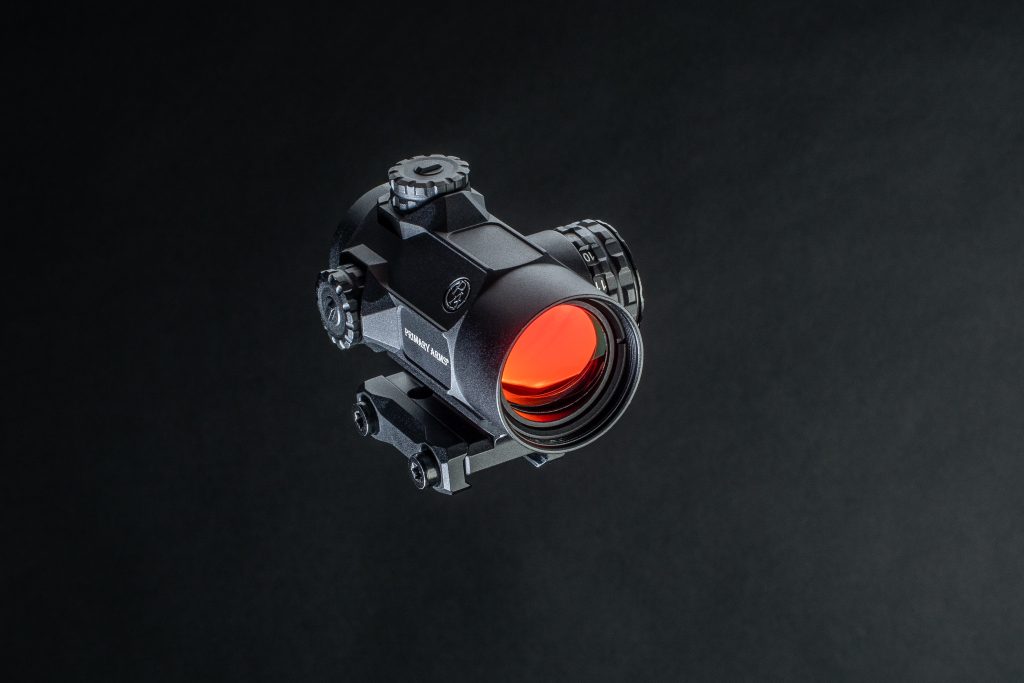
MD-25, Optics, PA-SLX-MD-25, Red Dot Sights, SLx
– Prism Scopes: Combining a fixed magnification glass optic with the compact size of a red dot sight, prism scopes are robust, feature etched reticles that work without batteries, and are designed to offer clear and bright images with expansive field of view.
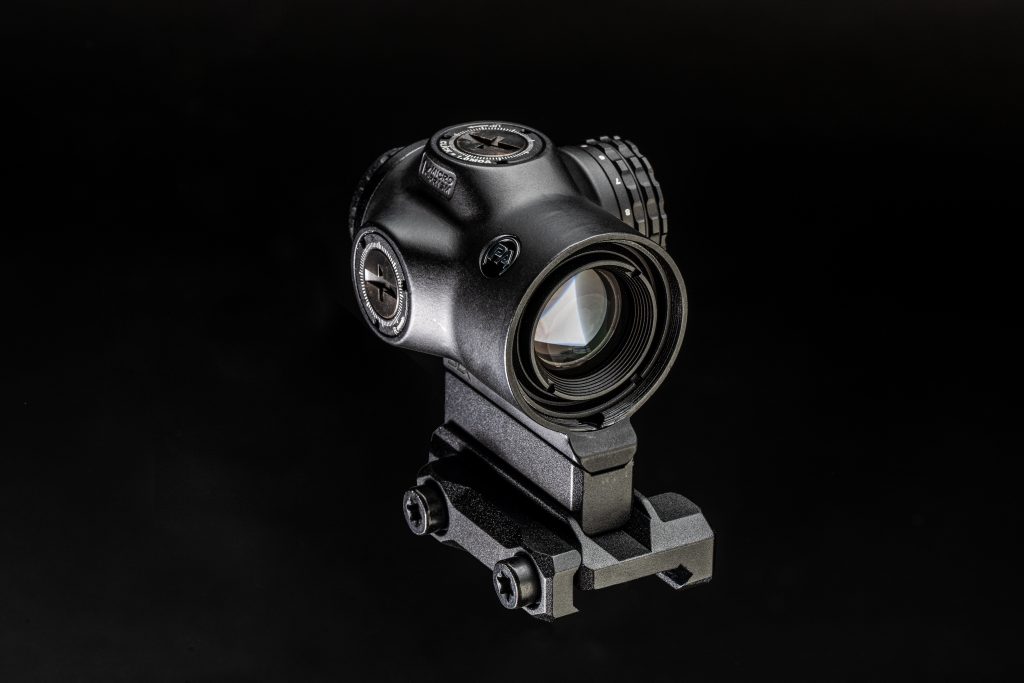
1X, 1xMP, Mirco Prism, Optics, PA-SLX-1XMP, PA-SLX-1XMP-CYCLOPS, Prism Scopes, SLx
– LPVOs (Low Power Variable Optics): Offering variable magnification from 1-6x or 1-8x, LPVOs are versatile for both close and mid-range engagements. When it comes to versatility, LPVOs are hard to beat, but it comes at the cost of greater size and weight than other optics.
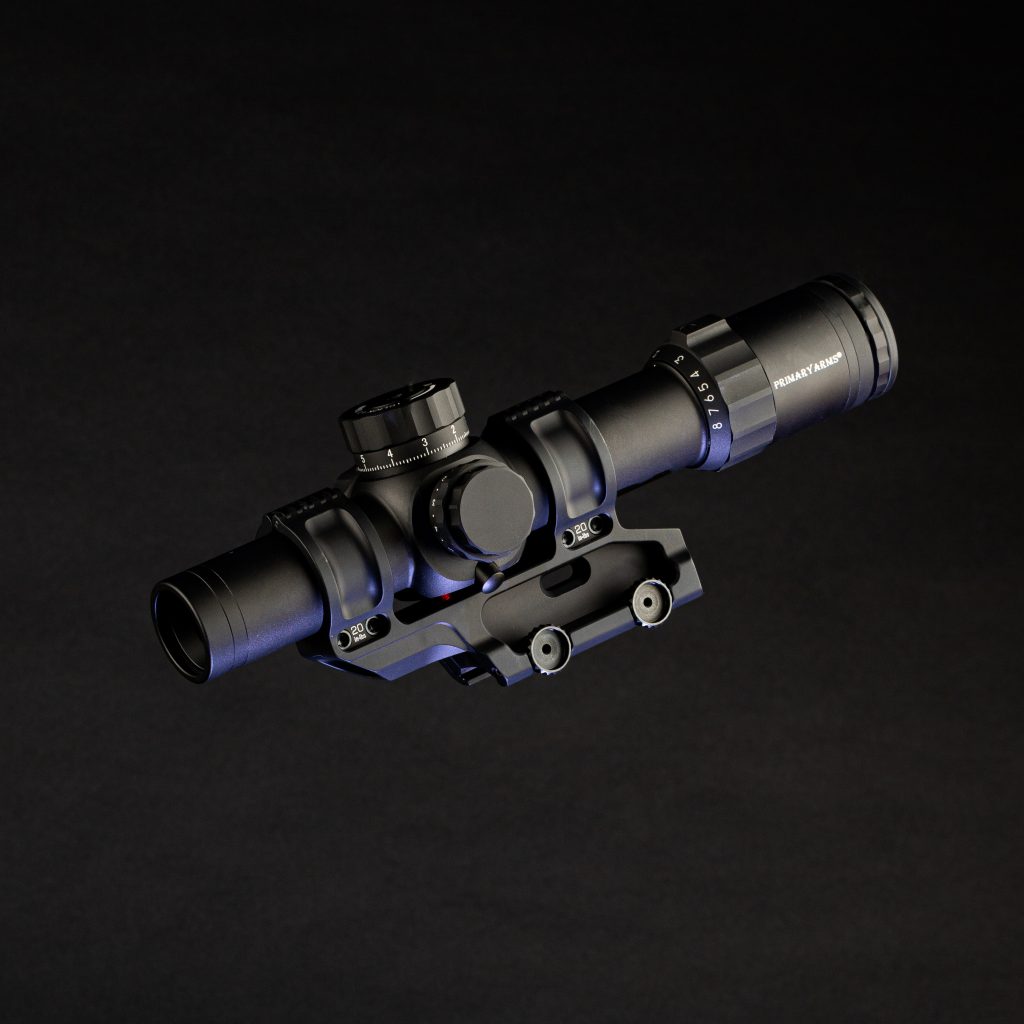
Scalarworks 1.93 34mm Scope Mount with PLX 1-8 LPVO
– MPVOs (Medium-Power Variable Optics): This includes scopes with minimum magnification of 2x or more. While these optics have some niche applications for precision AR-15s (such as SPRs), their benefits don’t usually outweigh the tradeoffs for your do-everything survivalist rifle. You take a big hit in close-quarters performance by eliminating your low-end 1x magnification while adding considerable weight.
What is a Prism Scope?
A prism scope, or prismatic scope, uses a prism to focus the image you see rather than a series of lenses, which is the case with traditional scopes. This design allows for a more compact and durable optic.
As a result, many militaries choose prism scopes as the primary optic for their infantry riflemen. In the U.S., most shooting enthusiasts are well-familiar with the Trijicon ACOG, which has been in service for decades. The unique fiber-optic and Tritium-powered design made for an incredibly rugged optic with a truly battery-free illuminated reticle.
Popular Prism Scope Brands:
– Trijicon: The ACOG series is a staple among military and tactical users, celebrated for durability and performance.
– Primary Arms Optics: Known for innovative reticle designs and offering high-quality optics at accessible prices.
– Vortex Optics: Their Spitfire prism scopes are well regarded for exceptional clarity and rugged build.
How Does a Prism Scope Work?
The functionality of a prism scope hinges on its internal prism. When light enters the scope, the prism directs and focuses it, correcting the image orientation and enhancing clarity. This allows for a more compact optic with fewer lenses, reducing potential failure points and often resulting in better light transmission.
Advantages of Prism Scopes
Compared to other types of optics, prism scopes have numerous advantages, making them uniquely suited for survival rifles.
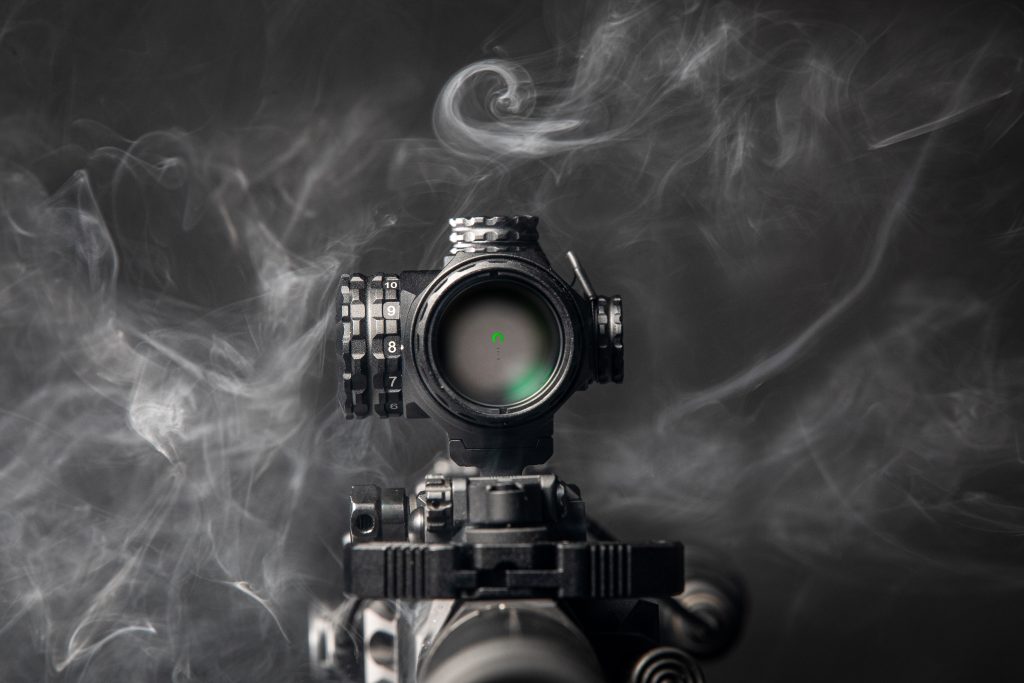
1X, Green, Optics, PAC1X-ACSS-CYCLOPS, Prism Scopes, SLx, Smoke
Prism Scope vs. Red Dot:
Improved Clarity and Sharpness for Astigmatism: Astigmatism is an ocular condition which affects more than a third of Americans. It can cause visual distortions and blurriness when using red dot sights. Prism scopes, with their etched reticles, offer a clear and sharp aiming point, unaffected by such conditions.
Battery Independence (Etched Reticle): An etched reticle in a prism scope remains visible without illumination, ensuring a reliable aiming point in all lighting conditions. This feature means that you are not reliant on batteries with a prism scope, and in the case of an EMP or similar event, a prism scope is still functional.
Enhanced Range and Target Acquisition: Prism scopes typically offer superior target acquisition and range compared to red dots, thanks to their magnification, glass quality, and reticles. The reticles in Primary Arms prism scopes, for instance, provide excellent ranging capabilities, facilitating quick shot adjustments.
Rugged Design: Prism scopes are often more durable than red dots. Being a chunk of hardened glass with an etched reticle, these optics can take a beating, and won’t fail due to an electronics issue.
Similar Cost: While high-end prism scopes can be on the pricier side, many models are affordably priced, providing excellent value for their features. Ultimately, unless you’re springing for a specialty prism scope like an ACOG, you’ll find most quality prism scopes and red dots to be comparably priced.
Prism Scope vs. Rifle Scope:
Cost: Comparing similar levels of quality, prism scopes can be more affordable than similar rifle scopes, offering substantial performance without breaking the bank. This value is even more substantial when you consider that prism scopes usually come with an included mount. For rifle scopes, you usually have to buy this separately, and good mounts tend to be $100 or more.
Weight and Simplicity: Prism scopes are typically lighter and simpler to use than variable magnification rifle scopes, making them easier to handle and quicker to bring on target.
Compatibility: Prism scopes are compatible with various firearms and mounting systems, requiring less rail space and offering greater versatility.
Reliability: With fewer moving parts than traditional rifle scopes, prism scopes are less prone to mechanical failures. They are also generally superior for passive aiming with NODs, adding to their versatility in different lighting conditions.
Field of View: Prism scopes generally have a much wider field of view when compared to a rifle scope at the same magnification level. While a prism scope is limited to its single magnification, it will offer the best possible performance at that specific magnification.
Prism Scopes with Offset Red Dots
One of the biggest drawbacks of a prism versus a rifle scope is the fixed magnification. Prism scopes generally do not have adjustable magnification like rifle scopes, so you can’t change between 1x and 8x magnification on the fly.
However, most of today’s prism scopes are designed to accommodate an offset reflex like a Trijicon RMR. By combining the prism scope with an offset reflex, you effectively claim all the benefits of a red dot in close quarters but with the magnified performance of a prism scope still available.
Primary Arms Prism Scopes
One of the most popular brands for prism scopes is Primary Arms Optics. Primary Arms has established itself as a trusted name in the affordable optics market, particularly with its innovative prismatic designs. Their product lineup includes a range of models tailored to different needs, but their most popular is the new MicroPrism. Survival Dispatch recently reviewed the 3x MicroPrism model, but there are also 1x and 5x versions as well.
MicroPrism Scopes
Primary Arms Optics’ MicroPrism series has been a game-changer in the prism world, bringing the power of a magnified prism to the form factor of a red dot. Weighing in at just a few ounces, these scopes are half the weight or less than competitive rifle scopes. MicroPrisms also feature the Advanced Combined Sighting System (ACSS) reticles, known for their versatility and ease of use across varied distances.
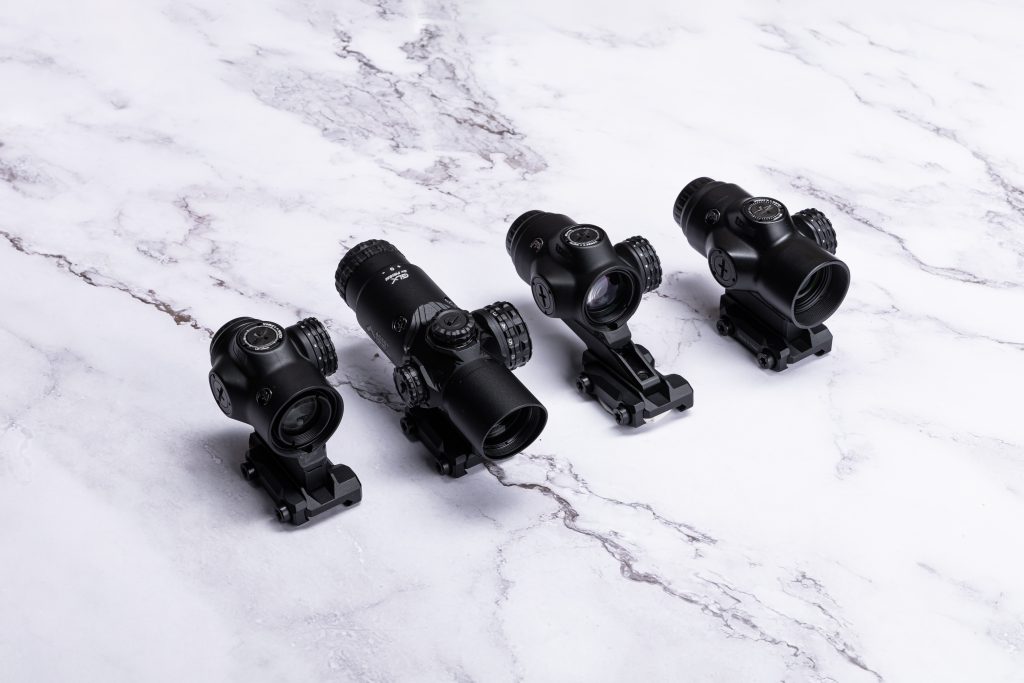
The ACSS Reticle
Primary Arms’ ACSS (Advanced Combined Sighting System) reticle design is a standout feature in their prism scopes. This reticle is designed for both close-range and distance shooting, offering a Bullet Drop Compensation (BDC) system that simplifies shot adjustments.
The ACSS reticle accommodates multiple calibers (5.56, .308, .300BLK, 7.62×39, 9mm, etc.) and provides intuitive ranging and wind hold capabilities, making it user-friendly and highly effective in various shooting scenarios. There are even metric versions for those more familiar with meter-based measurements!
Conclusion
Choosing the right optic for survival situations involves balancing durability, reliability, and performance. Prism scopes, with their rugged design, clear reticles, and versatile features, offer significant advantages over both red dots and traditional rifle scopes. Today, Primary Arms’ MicroPrism series, in particular, stands out for its compact size, innovative reticle designs, and overall quality.
For those looking to enhance their survival toolkit with a reliable and effective optic, a prism scope is undoubtedly an excellent choice.
=====
Become a Survival Dispatch Insider …
We bring together survival enthusiasts and preppers to share skills and knowledge, so you can enhance your preparedness for emergencies and ensure the safety of you and your community.
The Results You’ll Get …
Our community, courses, and memberships are pretty special. We focus on the ways it will make a huge difference in your life.
Here are a few of the things you’ll be able to do as a member of Survival Dispatch Insider …
1) Improve your emergency preparedness by learning survival skills and strategies from experienced preppers.
2) Build lasting connections with like-minded individuals that share your passion for safety and readiness.
3) Access a wealth of knowledge and resources to assist in protecting you and your community during unexpected situations.
Click HERE to get started.
=====
